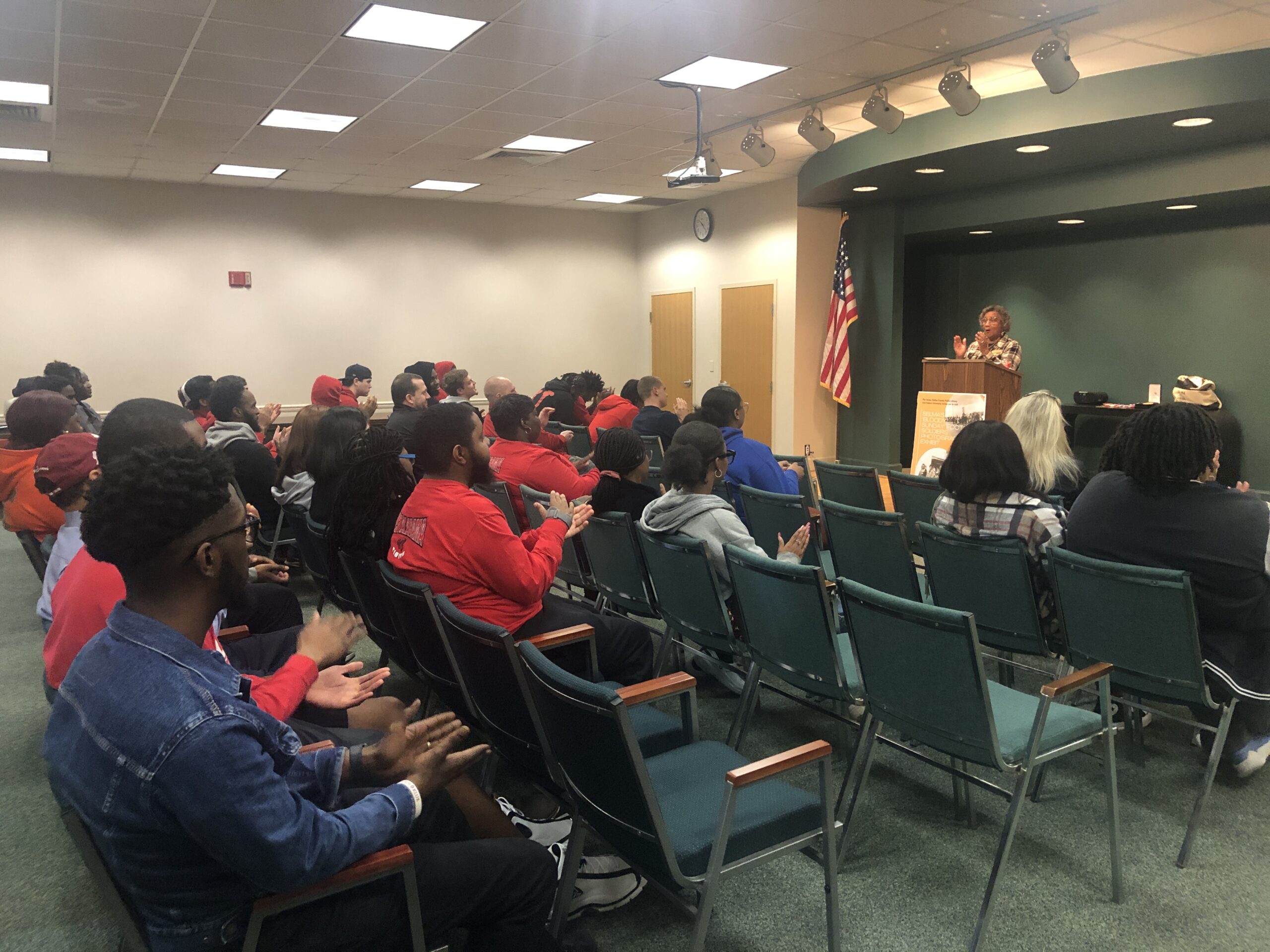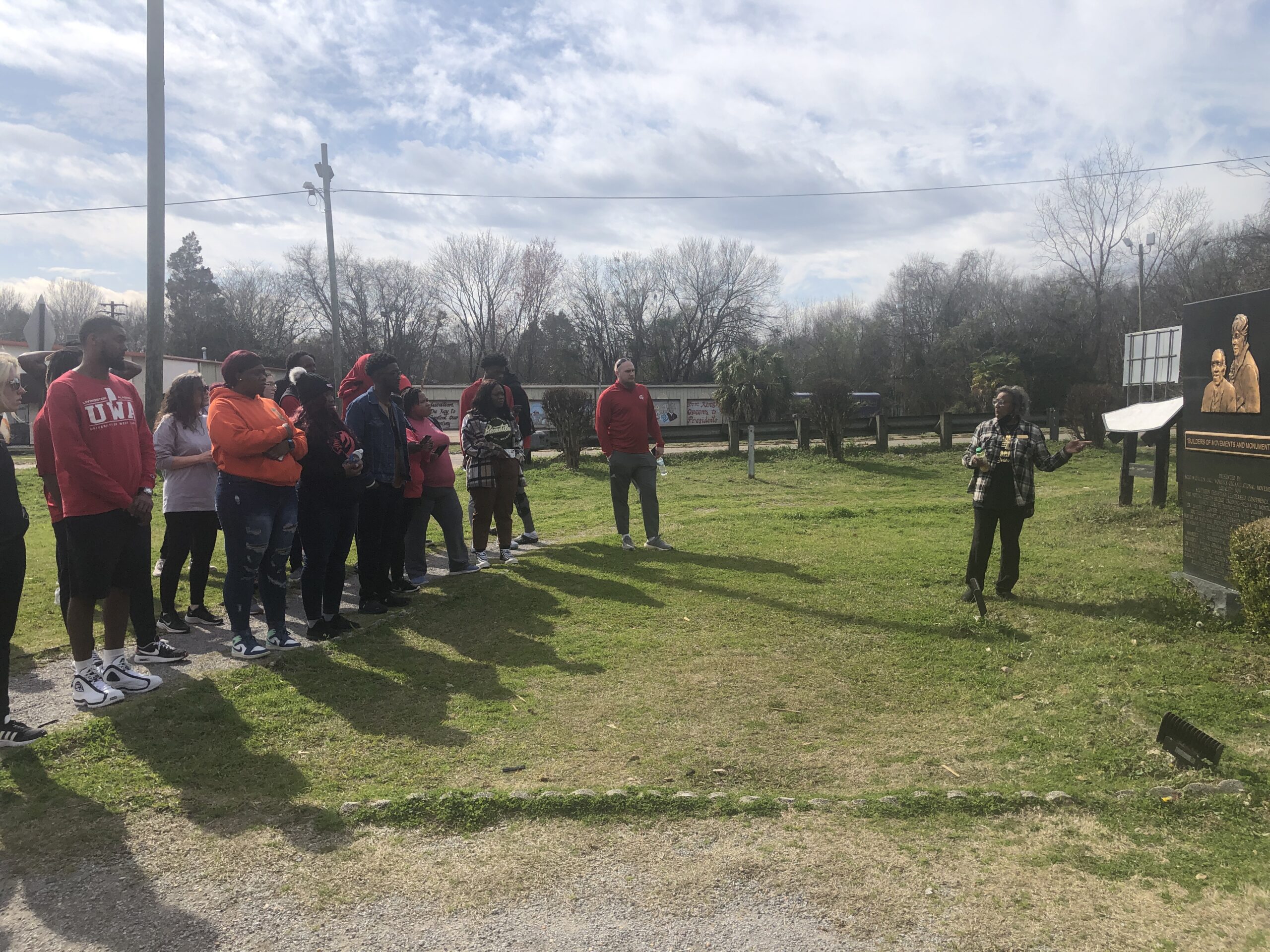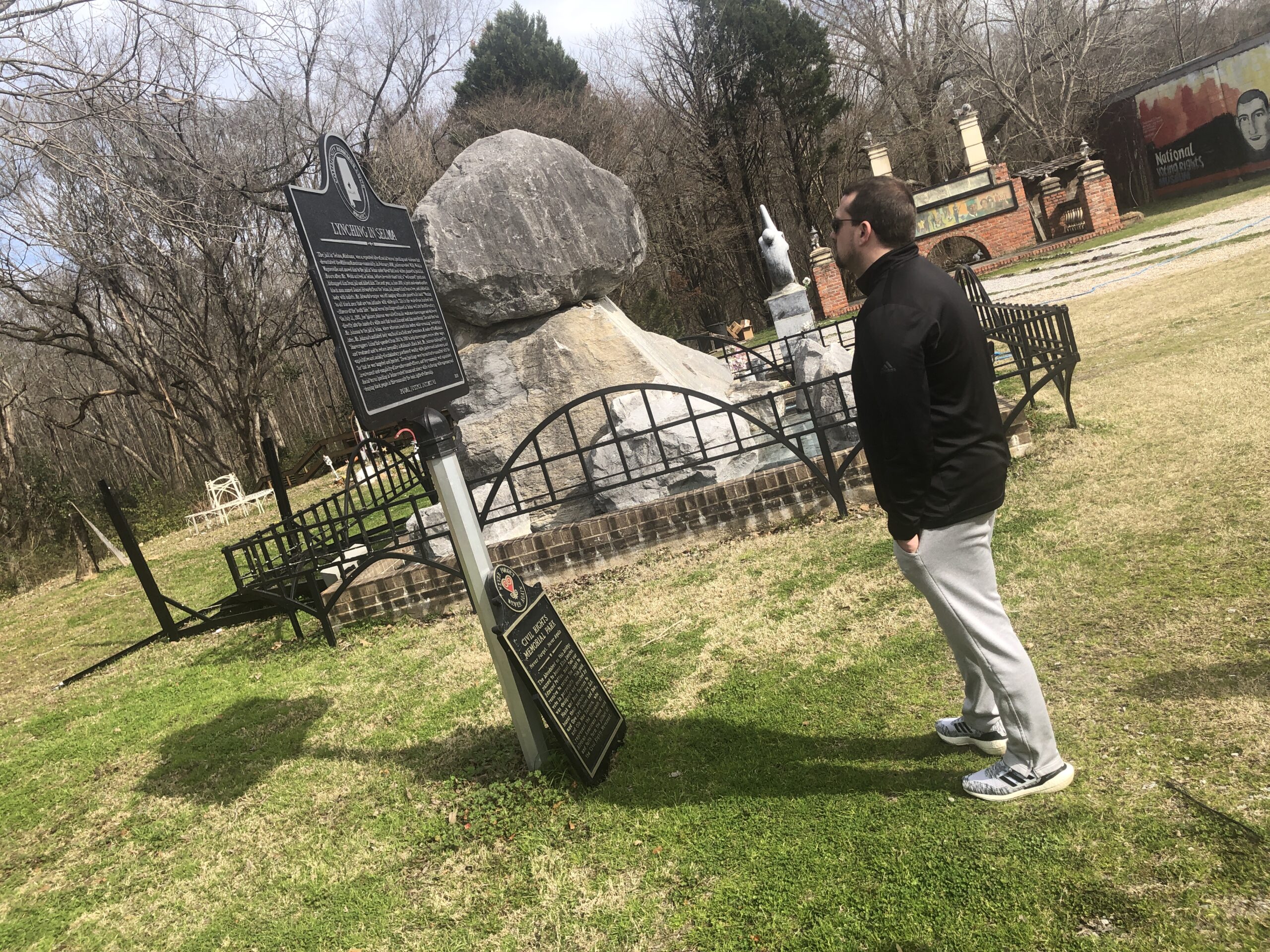
Story and photos: Phillip Tutor
Veteran of voting rights marches gives her details from Bloody Sunday
SELMA — Two by two, students from the University of West Alabama climbed along the eastern side of the Edmund Pettus Bridge, the hilly, 83-year-old Alabama River crossing that’s embedded in the nation’s civil rights story.
Marvin Price, a UWA junior from Baltimore, had every reason to be the last student to complete the 1,300-foot walk. Three weeks ago, he tore the meniscus in his left knee while playing for the Tigers’ basketball team. Surgery followed, his season on hold, his knee bound in a bulky thigh-to-calf brace.
Slow and steady, he conquered the Edmund Pettus.
“I’d heard about Selma all of my life,” Price said, “but I never really thought I would have the chance to actually go.”
Price’s opportunity arose when Student Activities and the Office of Diversity and Inclusion co-sponsored a trip Feb. 7 as part of the university’s Black History Month observance. A group of 50 students, faculty and staff members made the 75-mile bus ride to Dallas County, where they toured the National Voting Rights Museum and Institute, walked across the iconic bridge, and met Selma native Dianne Harris, who as a 15-year-old participated in four voting-rights marches, including the infamous “Bloody Sunday” event.
UWA’s contingent was a diverse group. UWA men’s basketball coach Nick Woodruff brought his entire team — whose height and Tiger-red basketball sweatshirts struck quite a pose in downtown Selma. Student Government Association president Aaron Lee made the trip. Joining Jason Gardner, the university’s director of student activities, were Dr. B.J. Kimbrough, dean of the School of Graduate Studies and UWA’s chief diversity officer; Dr. LaJuan Hutchinson, associate professor of sport management; and a host of university staff members.
Price left Selma with a deeper understanding of Black Alabamians’ struggle for voting rights in the 1960s, he said.
“It definitely made an impression because going through school and learning about it, I still didn’t know much,” Price said. “My teammates knew more about it because they’re from here, but there was a lot of stuff I didn’t know that people actually went through.”
In her hour-long presentation, Harris, a retired elementary school teacher, regaled UWA students with her first-person experiences from 1965. Because she attended a private Lutheran school instead of Selma’s public school for Black students, she admittedly was an unlikely participant in the marches. But the movement’s passion among Selma’s teenagers was too strong to resist.
Harris marched four times. On Bloody Sunday, she and her younger brother defied their mother’s wishes and joined in — not at the front of the group, but at the rear, which kept them from crossing the bridge. From the back, Harris could smell the tear gas wafting over the hill and hear the screams of Black residents being pummeled by state troopers’ billy clubs.
When troopers on horseback — “possemen,” they were called — chased marchers back toward downtown, Harris and her brother bolted for the safety of Brown Chapel AME Church. A posseman nearly caught them before they ran inside and hid in a pew, his horse’s hooves clapping on the church’s concrete front steps.
“It was God’s saving grace that we didn’t cross the Edmund Pettus Bridge,” Harris said.
UWA students begin the walk across the Edmund Pettus Bridge.
Twice she was arrested while marching. After Harris’ second march, she was arrested, fingerprinted, photographed and held eight hours at a former prison camp just outside of Selma. Her third march ended when she was among students imprisoned overnight in Selma’s National Guard Armory. Troopers told students they’d have criminal records and never get a job, she said.
Harris rejoined the UWA students when they reached the bridge’s southern terminus. Near the spot where troopers first began beating marchers, including future U.S. Sen. John Lewis, Harris showed students civil rights monuments that decorate a nondescript grassy plot alongside U.S. 80 Business.
“It was powerful having Ms. Harris with us,” Kimbrough said. “To me, that just pulled on my heartstrings, hearing her stories. I think the students got a lot out of it. I heard a lot of chatter and conversations.”
Some of the students, such as Price, weren’t Alabama natives and had never been to Selma. Others, such as C.J. Melton, one of Price’s teammates, were Alabamians but hadn’t walked the Edmund Pettus Bridge, either. Though Melton’s paternal family includes Selma roots, he found Harris’ story and the bridge’s legacy worth the day-long trip. It was his first time traversing the bridge, as well.
“It was very eye opening and fascinating,” he said. “It’s crazy how, as an African American myself, I can just walk around now and not even look over my back or anything. It’s just a different point of view from now to back then. It’s totally different. You can be nothing but grateful.”
Gardner and Kimbrough envision Selma being including in a four-year, rolling schedule of Black History Month trips that will enrich students’ understanding of the civil rights movement. Their wish list is a schedule of annual excursions that includes Selma, Memphis (National Civil Rights Museum and the Lorraine Motel), Atlanta (the King Center and the National Center for Civil and Human Rights), and a variety of sites for the fourth year. Options could include the Birmingham Civil Rights Museum or the Clotilda slave ship historical location just north of Mobile.
“I think (Selma) was powerful,” Kimbrough said. “I am so grateful that we had students who took advantage of this opportunity. We wanted to provide opportunities for them to see places and experience things. I think this trip gave them that.”


